Abstract
The evolution and constant development of sports organizations can be argued through the various activities in which they take part. The dynamics of modern technologies has brought and will continue to bring changes in professional life, whether we refer to the nature of work, its organization or the methods applied to it. The stress and tension accumulated during the active work of human resources, especially in the central nervous system, are factors that can justify the need for special measures to be taken by economic agents to stimulate physical shape and health of the active population. The aim of the research is to reflect the importance of using physical activities during working hours, namely to encourage economic agents to regulate their practice at institutional level, especially during the work break. The objectives of the research are to establish an information policy that will allow entities to take appropriate publicity measures to support these types of activities, as well as to reflect research results which will highlight that physical activity, especially during break, can contribute to reducing work-related accidents and exert a positive influence on institutional well-being and productivity. Thus, sports programs must be developed in accordance with the diversity of working conditions that will also aim at the development and maintenance of the interest shown by the participants.
Keywords: Programsphysical activitiesprofessional lifesports organization
Introduction
Encouraging the active population to practice physical activity by all possible means, including working hours and leisure time, within or outside the organization, is an essential objective for employers to motivate individuals to participate in such organized actions. In this way, especially promotion campaigns can be initiated, emphasising not the competition, but increasing the number of participants. At international level, organizations that provide spaces for practicing gymnastics or other sports activities for employees benefit from fiscal facilities from the state. Also in Europe, health insurance companies practice discounts for employees doing sports at work. This change of orientation will require employers to plan additional financial resources, but with an expected effect in gaining considerable benefits for active employees. At the same time, a significant role in this respect can be played by cooperation with local public authorities and other important partners (business and union organizations, local authorities, local groups, sports and education directorates, volunteer organizations etc.) through the development of partnerships (as an object to jointly organize physical activities for the active population), which can provide employees with the necessary facilities to carry out physical activities (Veaceslav, 2016; Victor, 2018). These activities must include regular and appropriate breaks, with the possibility of practicing the sport within the entity, during and after working hours, to organize collective and individual courses for the acquisition and growth of physical shape, supplemented by an improvement in the quality of life (Council of Europe, 1983).
Problem Statement
The study was conducted through the application of the sociological questionnaire, the categories of respondents (managers, employees, officers of human resources departments from various institutions) and statistical data interpretation being mainly centred on carrying out a large research program to determine the importance of using physical activities during working hours and to regulate them at institutional level according to the labour law in force.
Research Questions
The research involves the identification of information on employers’ support for physical activity programs that can be regulated at institutional level for the purpose of being practiced by employees, especially during work breaks, and which may have the beneficial effect of reducing work accidents and exercising a positive influence on welfare and organizational competitiveness.
Purpose of the Study
Starting from the purpose of the research, namely to reflect the importance of using physical activities during working hours, thus encouraging economic agents to regulate this practice at institutional level, especially during the work break, we conducted a study on the active population engaged in three distinct areas: education, economy and health.
Research Methods
Methodology of research: analysis of specialised literature; observation; sociological questionnaire (its content was formulated according to the purpose of the research and the target objectives). The structure and content of the questionnaire followed a logical scheme, including both general and specific questions. Before being applied to the respondent categories, the questionnaire was validated through an instrumental research (a pilot survey). The sociological questionnaire was administered to a group of 147 people divided by category (Table
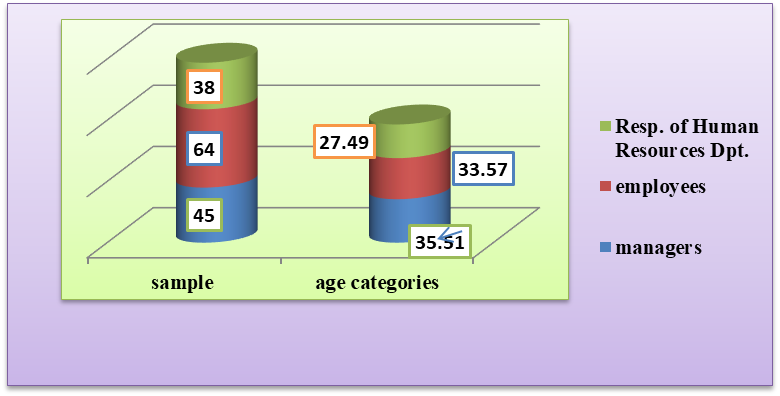
Findings
The change-oriented approach adopted by the superior managers of the institutions over the last few years has prioritises motivation and behaviour at work as essential determinants of the team success.
According to speciality practice, the organizations need three basic behaviours: people must be attracted to the organization, but also tempered; people have to be good at the jobs they have been hired to do and work in a positive way; people have to go further this positive role of performance and engage themselves in creative, spontaneous and innovative behaviours at the workplace (Ce activități sportive preferă angajații din România?, 2018).
Currently, the human resource is hard to manage if the dimensions that affect its performance are not known. Understanding the behaviour of employees can also be done adequately by trying to ensure a pleasant work environment and stimulating their motivation (granting financial or moral benefits) (Budevici-Puiu & Amelicichin, 2015; Veaceslav, 2018).
If we were to identify the extra-salary benefits that keep employees in organizations and how they can be motivated in a changing labour market, we could certainly also refer to physical activities during work breaks or during leisure time, organized together with the professional teams that carry out their activities in the institutions (Braniste, Calugher, & Lungu, 2018).
In this context and following the study, we will present the most significant moments found with reference to the researched subject.
With regard to the question “Does the institution you are employed in offer extra-salary benefits? If the answer is positive, please indicate them”, the interviewees responded positively (over 75%) (Figure
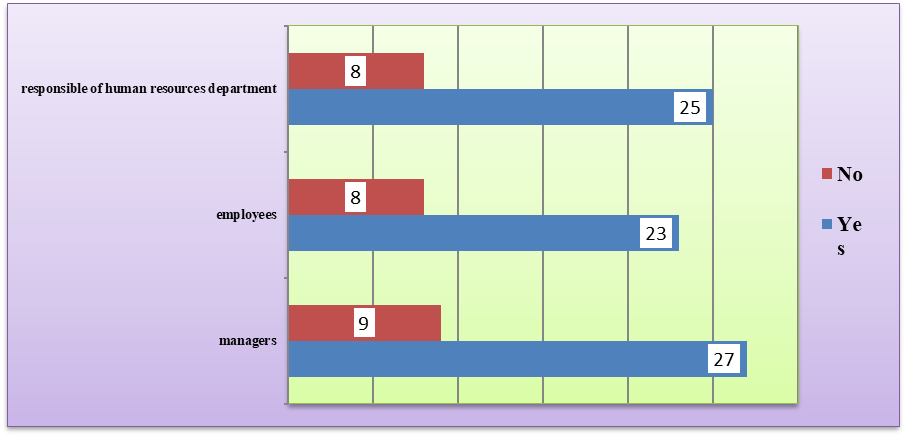
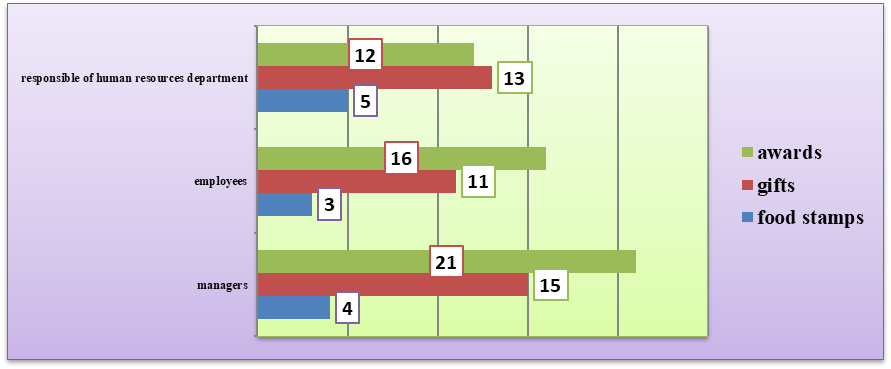
Regarding the question “Do you think that organizing and regulating, at institutional level, the physical activities during work breaks could help you achieve higher performance in your professional activity and implicitly of the team in which you perform your activity?” (Figure
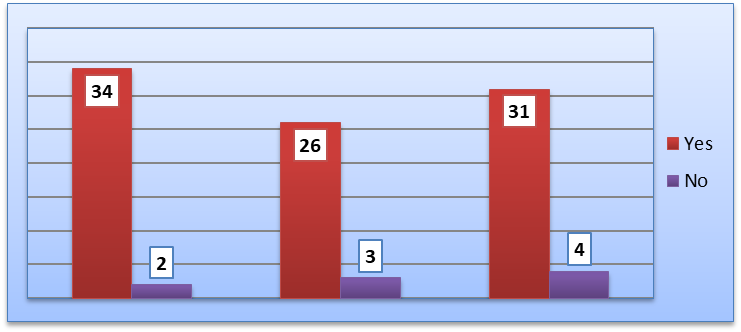
Within the study, we have also found that men and women have different attitudes towards gymnastics in the work break. In most cases, men are more active and, in this sense, appropriate sports programs should be designed. Thus, in order to achieve a correct, adequate gymnastics and to complement the other activities, these sports programs should take into account the diversity of places and methods of work. With the development of new ways of working, especially those related to computer science, the characteristics of these programs are becoming increasingly important. At the same time, it is important that these programs aim at raising and maintaining the interest shown by the participants.
Regarding the question “Do you think that the existence, within the institution where you work, of the necessary and appropriate means to perform physical activities during the break would help to stimulate your wish to participate in such programs?”, we can observe that the options are generally positive (67%), and the negative ones are recorded in a percentage of 23% (Figure
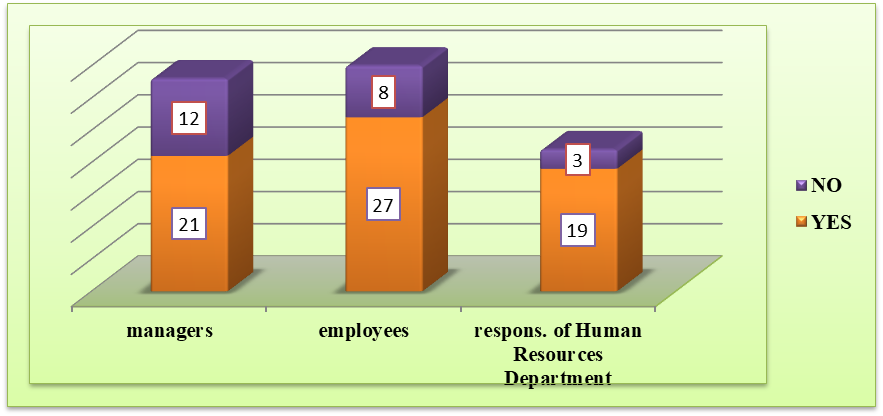
Among the advantages of physical activities during the work break, we can mention:
for employees:
improving physical shape according to the frequency of physical activities;
changing mental attitude (these activities do not involve as many losers as they could be quantified in a competition);
stimulating daily life (physical activities performed during the work break can attract different target groups; they can introduce norms and values related to their competitive nature);
improving communication (employees have the opportunity to know each other in a different environment than the working one);
developing team spirit (belonging to a group is important for the individual, as it can have beneficial effects on the working environment);
efficient use of additional leisure time.
for employers:
stimulating the sense of belonging to the reference institution (this sense of belonging to the institution can develop beneficially, in parallel with the team spirit);
improving the image of the institution by encouraging the physical activity of employees;
health increase – physical activities reduce absenteeism and improve employee health.
Physical activities can be organized by employers according to employees’ work schedules to make communication more effective and stimulate motivation at work, and can have positive effects on employees and teams. Human resources studies show that the non-financial part of the benefits package provides loyalty to the employing institution and has strong effects as it addresses the emotional side of the employee. The practice of physical activities is voluntary, and therefore it must be in accordance with the needs, desires and skills of the individual: one of the main motivations must be pleasure, the source of social benefits (friendship, communication and integration into the community).
Conclusion
To conclude, we can say that it would be useful and interesting for the institutions to organize adequate programs for the practice of physical activities during the work break, according to internal regulations, and whose objectives and methodologies are likely to promote sport, the exchanges of constructive ideas between employees, inclusive effective cooperation outside working hours too. It is also important to note that some target groups (women, elderly, disabled) employed at different institutions (as the case may be) need adapted programs and easier access to existing sports facilities in specially designed rooms to practice these physical activities. Sometimes, additional financial resources are needed to acquire these facilities, according to the employer’s wishes and availability.
Employers can stimulate employees’ motivation to practice physical activities by creating opportunities for participation, designing programs to foster continuous loyalty to them, as this is in fact the most important part of staff retention (by providing benefits).
References
- Braniste, G., Calugher, V., & Lungu, E. (2018). The quality of education and training in the context of knowledge based society. In V. Manolachi, C. M. Rus & S. Rusnac, New Approaches in Social and Humanistic Sciences (Vol. 3, pp. 103-110). Iași, Romania: LUMEN Proceedings. Retrieved from http://dx.doi.org/10.18662/lumproc.nashs2017.8
- Budevici-Puiu, L., & Amelicichin, E. (2015). Competenţele managerilor care susţin şi promovează învăţarea informală la locul de muncă al specialiştilor din domeniu. In Problemele acmeologice în domeniul culturii fizice: Materialele Conferinţei Ştiinţifice Internaţionale Chişinău (pp. 13-20).
- Ce activități sportive preferă angajații din România? (2018). Retrieved from https://www.wearehr.ro/ce-activitati-sportive-prefera-angajatii/
- Council of Europe. (1983). Seminar on Sport, work and well-being. Vierumaki, Finland. [Committee for the Development of Sport].
- Veaceslav, M. (2018). “Personality deficit” – A dangerous disease of contemporary society and the role of sport in combating It. Revista Românească pentru Educație Multidimensională, 10(1), 4-9.
- Veaceslav, M., (2016). Managementul şi dezvoltarea durabilă a sportului. Chişinău: USEFS.
- Victor, M. (2018). Development of managerial skills and sports management to future sports specialists. The European Proceedings of Social & Behavioural Sciences 56, 383-388. http://dx.doi.org/10.15405/epsbs.2018.03.51
Copyright information

This work is licensed under a Creative Commons Attribution-NonCommercial-NoDerivatives 4.0 International License.
About this article
Publication Date
16 February 2019
Article Doi
eBook ISBN
978-1-80296-054-9
Publisher
Future Academy
Volume
55
Print ISBN (optional)
-
Edition Number
1st Edition
Pages
1-752
Subjects
Sports, sport science, physical education
Cite this article as:
Budevici-Puiu, L. (2019). The Importance Of Using Physical Activities During The Working Hours. In V. Grigore, M. Stănescu, M. Stoicescu, & L. Popescu (Eds.), Education and Sports Science in the 21st Century, vol 55. European Proceedings of Social and Behavioural Sciences (pp. 730-736). Future Academy. https://doi.org/10.15405/epsbs.2019.02.90
